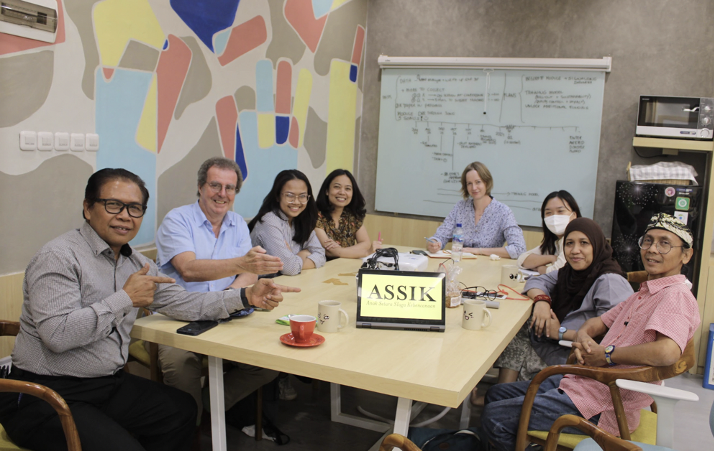The ASSIK project conducted research and development work in Jakarta, with colleagues from ROCHMI (Research of Community Mental Health Initiatives, University of Indonesia) and Disability innovation centre (UNESA, Surabaya).

This included a very enjoyable workshop with teachers on creating Indonesian songs to support disaster risk reduction, which we will build on in our future work.
Disaster risk reduction in Jakarta, the capital city of Indonesia, is a critical area of focus due to its vulnerability to various natural hazards. Jakarta faces multiple disaster risks, including floods, earthquakes, landslides, and urban fires, which are exacerbated by factors such as rapid urbanization, population growth, and climate change.
Floods are among the most recurrent and severe disasters in Jakarta. The city’s location in a low-lying coastal area, coupled with intense rainfall and insufficient drainage systems, leads to frequent flooding during the rainy season. These floods not only disrupt daily life but also cause significant damage to infrastructure and pose a threat to public safety.
To address the disaster risks in Jakarta, various disaster risk reduction strategies have been implemented by the government and other stakeholders:
- Flood Control Measures: Jakarta has invested in flood control infrastructure, including dams, reservoirs, and floodgates, to manage water flow during heavy rainfall and prevent inundation of urban areas.
- Urban Planning and Land Use Regulations: City authorities are working on urban planning and land use regulations to control haphazard development and prevent construction in high-risk areas, such as flood-prone zones and earthquake fault lines.
- Early Warning Systems: The city has established early warning systems for floods and other hazards to provide timely alerts to residents and authorities, allowing for quick evacuation and response.
- Community Engagement: Disaster risk reduction efforts in Jakarta involve community engagement and awareness programs. These initiatives aim to educate residents about disaster preparedness, response measures, and the importance of cooperation during emergencies.
- Climate Change Adaptation: Jakarta is also focusing on climate change adaptation measures to build resilience against the impacts of rising sea levels, increased rainfall intensity, and more frequent extreme weather events.
- Green Infrastructure: The city is promoting the use of green infrastructure, such as parks, green roofs, and permeable pavements, to enhance water absorption and reduce the risk of flooding.
Despite these efforts, challenges remain in effectively managing disaster risks in Jakarta. The city’s rapid urbanization and limited resources pose obstacles to comprehensive disaster risk reduction. Additionally, the relocation of vulnerable communities from high-risk areas is a complex and sensitive issue that requires careful planning and consideration.
Continued collaboration between the government, communities, universities non-governmental organizations, and other stakeholders is essential to enhance disaster risk reduction efforts in Jakarta and build a safer and more resilient city for its residents.
The Open University WELS – ECYS, Rumpus Research team led by Prof. Kieron Sheehy is glad to participate in ASSIK.

